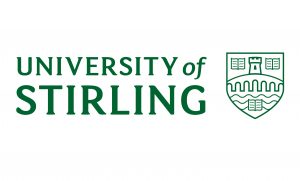Workshop Themes and Extracts
(Compiled and written by Dr. Alastair Mann, University of Stirling)
Below are seven suggested themes for class or tutorial study along with some extracts of government and parliamentary records with a few supporting documents. All are ‘translated’ from Scots or Latin in a more modern English style in order increase understanding, although the linguistic feel of the period has been retained. Note the longer extracts provide ample opportunity for teachers and students to cut and paste a few lines of particular interest.
A small glossary of Scots terms (most identified by an asterisk*) is provided in the Glossary Section, but standard English dictionary use may be necessary. RPS has a more extensive glossary which will help you.
For a PDF of the full workshop click on the blue title above each introduction.
In recent years social historians have been very interested in the conditions and lives or the poorest in society as a reaction against the domination of the elite in the historical record. But surprisingly we find in medieval and early modern Scotland that the elite was much exercised by the problem of the poor.
Workshop Two – Clothing & Dress
At first sight dress and clothing hardly seem a priority for kings or parliaments. However, dress was not just a matter of free choice in the medieval and early modern periods. Dress was a mark of social rank, status and wealth. The Government and Crown felt it necessary to legislate for national standards of dress for particular levels of society and to help ensure that clear differences were maintained between specific social groups. These acts were ‘sumptuary laws’ controlling the market in clothes and also the departure of gold and silver from the country when clothing was imported. Furthermore, statements of the lamentable state of the clothes of the general population shows that such condition was seen to reflect badly on the international reputation of Scotland and created a bad impression for overseas visitors.
The crown and parliament of medieval and early modern Scotland, as for all nations and governments then and since, struggled to control the production and distribution of ‘undesirable’ manuscript and printed material. Many types of writings were banned and suppressed from immoral and blasphemous tales to treasonous tracts that attacked the religion and government of Scotland, and even the king himself.
Workshop Four – Markets, Fairs & Burghs
Comparatively few new royal burghs, the seats of trade with a monopoly of overseas trade and where the landed superior was the crown, were founded in the entire sixteenth and seventeenth centuries, a total of 21 between 1560 and 1707, and only two after 1650. Many were created in the medieval period but by 1707 they numbered 67 and each, of course, had the right to elect commissioners to attend parliament. However, the growth in burghs of barony and regality, that is burghs where the superior was a landed individual rather than the king, was remarkable. From 1450 to 1707 no less than 350 burghs of barony were created by the crown and ratified by parliament. 110 appeared between 1660 and 1707 although perhaps a third of these were not viable, were created for reasons of landed rivalry, flourished briefly then declined, never flourished at all or were only sought so that a market of fair could be held near existing rural settlements. Indeed, the rights to hold annual fairs and weekly markets were repeatedly sought after 1660 and almost a quarter of the legislation passed by the parliament in the 1660s and 1670s related to the confirmation of rights to various superiors or burghs for additional or new markets and fairs. The fragile economic boom in Scottish trade in these decades was encouraged by the willingness of parliament to award such privileges.
Members of the Scottish Parliament were not only men (women never attending other than in a few occasions as wives of elite nobles when they observed the opening ceremony or if the Queen was head of state) but also fathers, sons, and husbands and so naturally they were concerned for the welfare of the medieval and early modern family in Scotland. For example, before and after the Protestant Reformation in 1560 Parliament legislated to maintained the principles that marriage was forbidden before the age of puberty (14 years for men and 12 years for women) though in reality marriages occurred much later, and in the case of the nobility nearly two-thirds in the period 1560 to 1637 married between 18 and 25 years. Inheritance depended on the legitimacy of marriage and parenthood and was seen as vital but other matters such as adultery, divorce and the relationship between parent and child were also reviewed by parliament members who were, along with their church, just as anxious as modern counterparts to preserve social institutions.
Workshop Six – Leisure and Games
Governments and parliaments are also concerned with the control of leisure time from statutory limitations on working hours to the setting up of agencies to classify films according to their suitability for audiences of particular ages. In workshops three we have seen how censorship was carried out in medieval and early modern Scotland but generally a range of economic, social and moral motives justified legalization that moderated conduct, and this is the case with games, sports and leisure time as can be seen from the examples that follow.
Workshop Seven – Images of Parliament
There are not a large number of images of the old Scottish Parliament, but what does exist provides a useful indication of where and how the assembly met. Details of the locations and working of Parliament can be found in other sections of this website, and those illustrations referred to are numbered. Some images of the records of the Parliament are also provided. In addition, click ‘Images’ on the Home Page for a wider selection.

